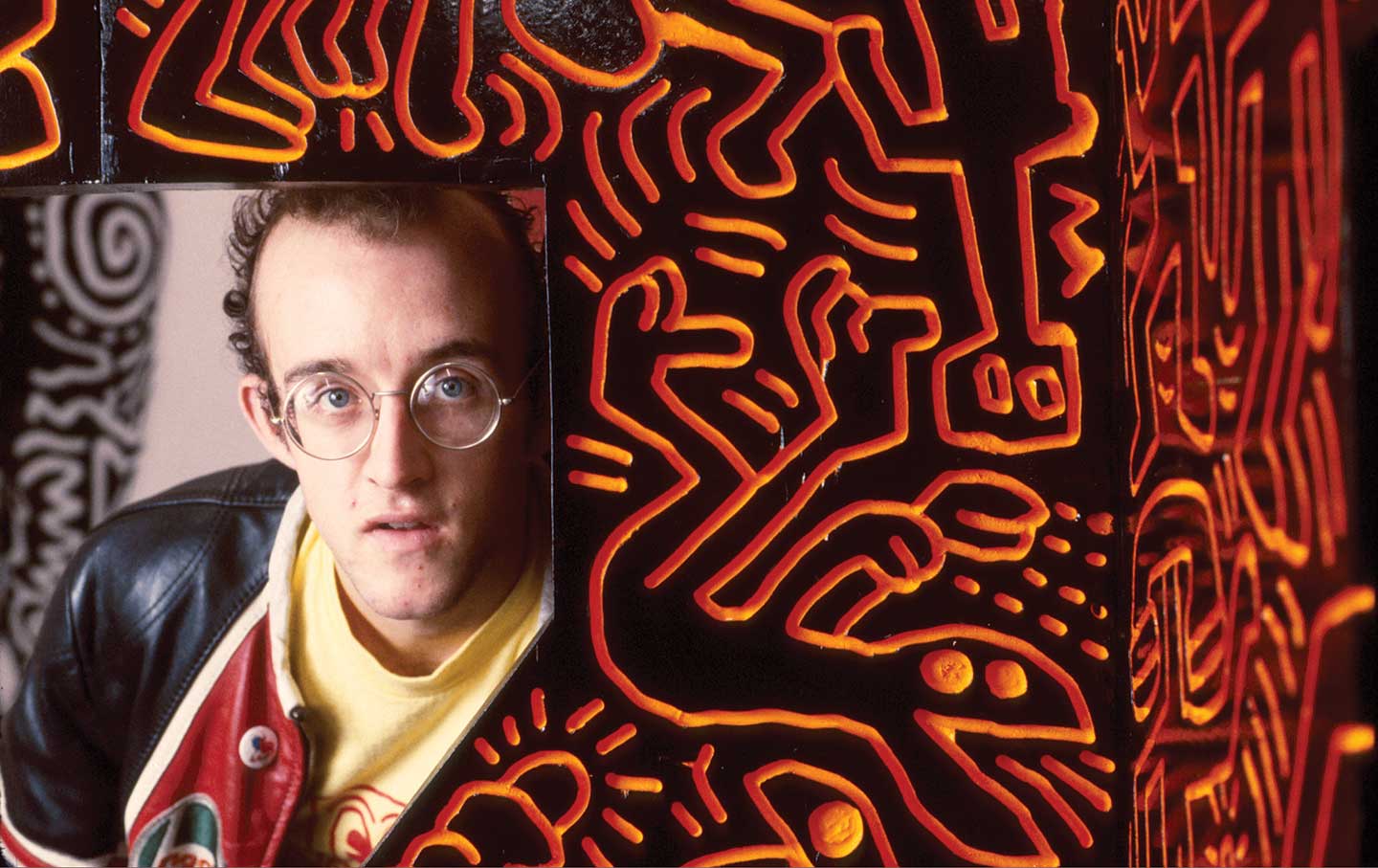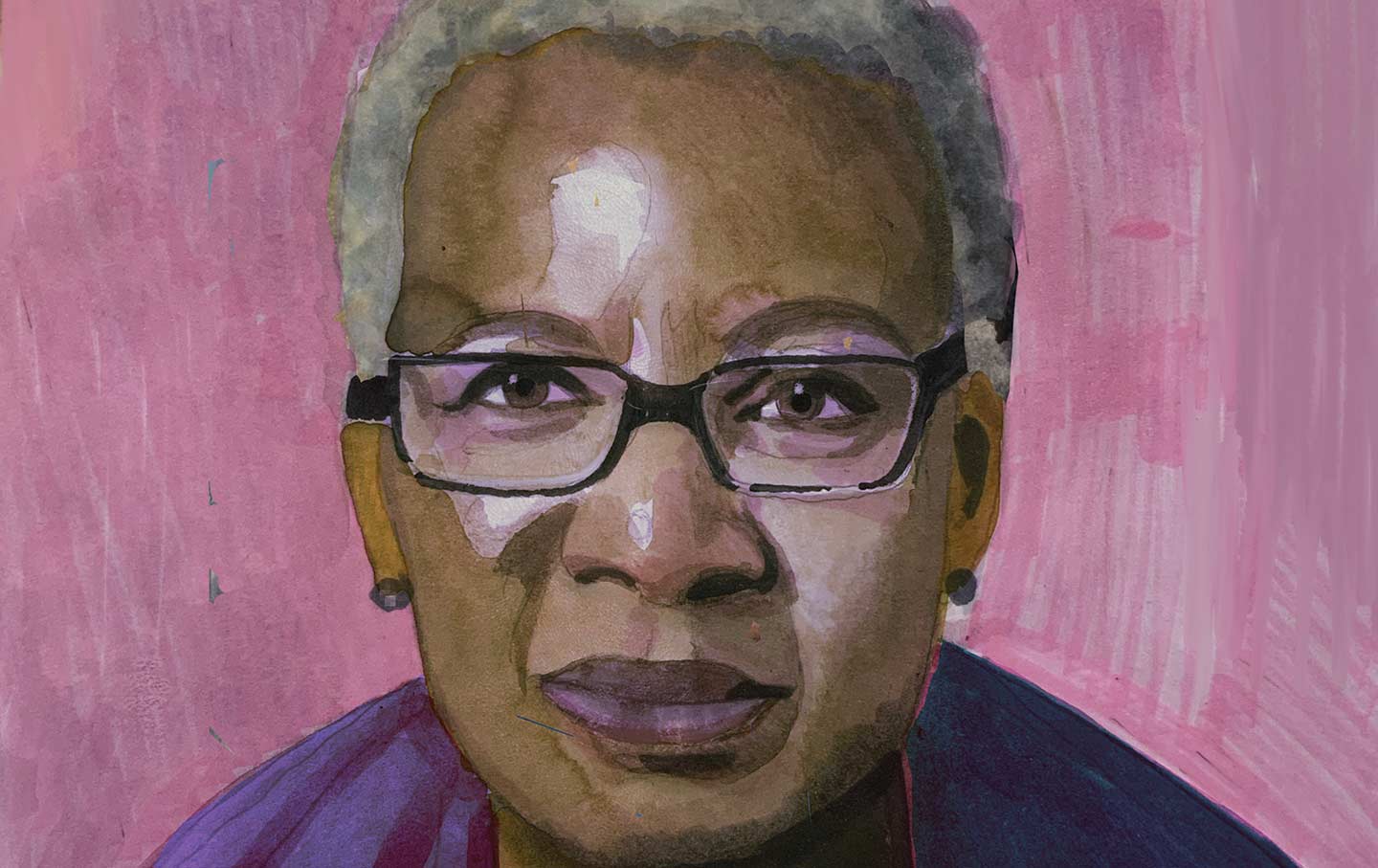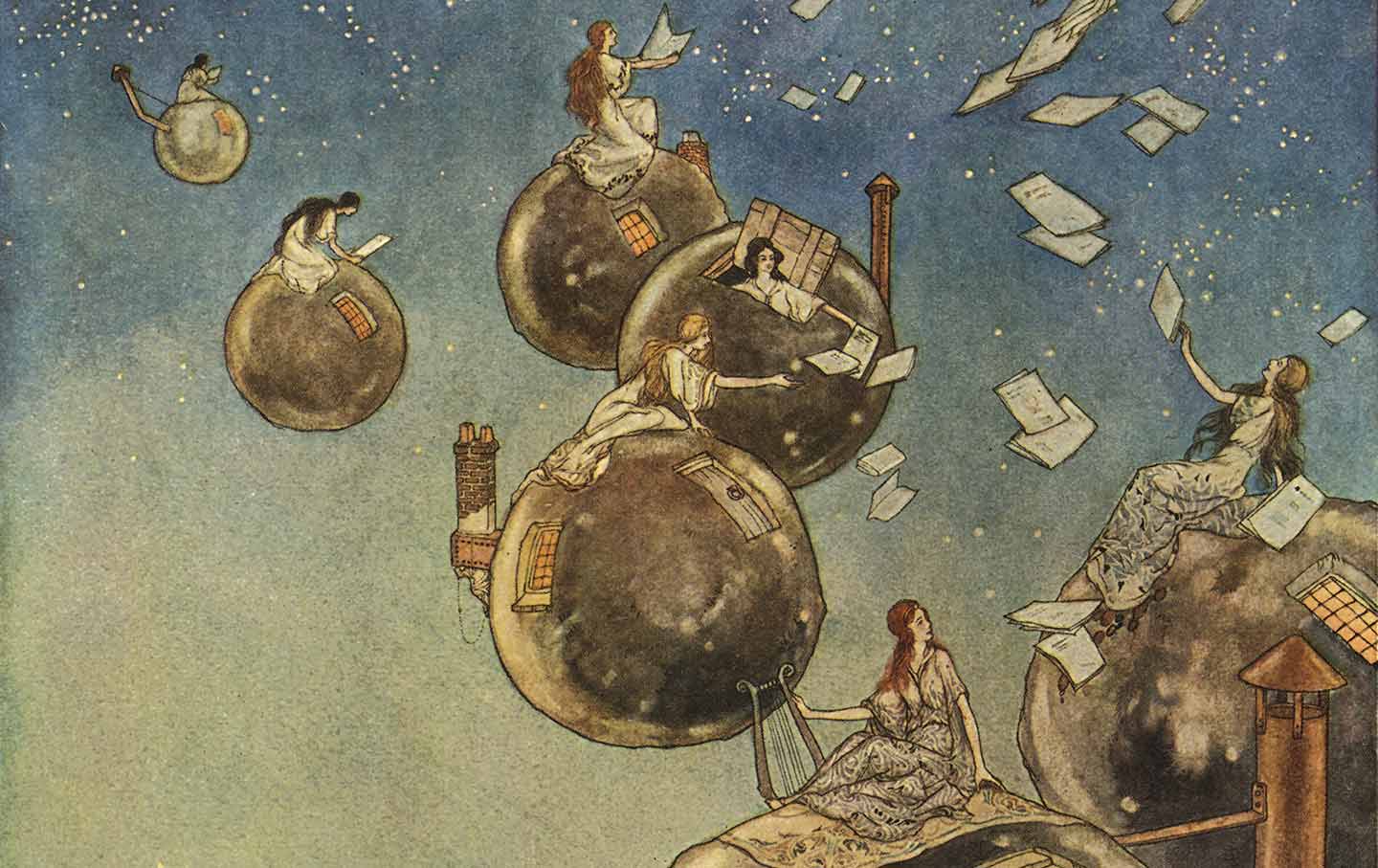
Politics
/
Books & the Arts
/
May 8, 2024
Vinson Cunningham’s novel of faith and politics.
In Great Expectations, Cunningham examines the hope and aspirations of the Obama generation.
In the wake of Bill Clinton’s presidential victory in 1992, a new genre of media—spanning literature, cinema, and television—emerged that sought to capture the energy of his campaign, the hope his election engendered, and the inevitable clash between the poetry of campaigning and the prose of governance. Among the first entries in this genre was The War Room, a documentary that was released a year after the election. It chronicled the various triumphs and tussles of his campaign and starred an inimitable figure who would become a regular presence in the American media—as a subject and a participant—for the next three decades: George Stephanopoulos. Stephanopoulos had joined the Clinton campaign at the age of 30, distinguished himself as a shrewd strategist and communicator, and—in the early years of Clinton’s presidency—was often pictured by the president’s side. He became one of the most popular figures in the Clinton administration and embodied many of its values, including the virtues of an agile technocratic intelligence, the ascendance of a governing philosophy grounded in neoliberalism, and the importance of preparing the next generation to assume power.
The Stephanopoulos persona also became the idealized standard for the fictional depiction of a young person who boldly inhabits—and thrives within—the inner sanctums of government. Stephanopoulos stand-ins featured prominently in the Clintonverse of books, movies, and TV that appeared throughout the 1990s, from Primary Colors, the novel by Joe Klein, to The American President, the film directed by Rob Reiner, to The West Wing, the TV show created by Aaron Sorkin (who also wrote the screenplay for The American President).
As a politically inclined teenager, I was especially taken with Stephanopoulos. I purchased his political memoir, All Too Human, soon after it was published and read it breathlessly over two nights; a short while later, I read it again. I also watched and rewatched the movie version of Primary Colors, directed by Mike Nichols, in which the Stephanopoulos character, Henry Burton, is played by Adrian Lester, the Black English actor. I was drawn to both because they seemed to provide a guide for how a young person (and in the case of Primary Colors, a young Black person) might enter the highest levels of political power and policymaking and survive. Both the movie and the memoir were also frank about the costs of rapid ascension through the political ranks. In All Too Human, Stephanopoulos describes how he endured so much stress during his time in the White House that his face erupted in hives; in Primary Colors, Burton’s idealism is crushed when he learns intimate details about his boss’s foibles and indiscretions. The movie and the memoir arrived at the same conclusion: Success at the acme of politics requires you to ingratiate yourself with your superiors and then subordinate yourself to their desires. You must, in other words, dedicate yourself entirely to the machine.
Curiously, the presidential campaigns and administrations of Clinton’s successors—George W. Bush and Barack Obama—failed to yield a similar universe of personalities. In the case of Bush, this is understandable: Hollywood has historically lavished more attention on Democratic politicians. Obama’s case is more complex; there are many books and films about his life, his candidacy, and his administration, but they tend to focus on the man himself. There was a coterie of young people surrounding Obama during his time in the White House: his body man, Reggie Love, and a crew of communications experts, including Jon Favreau, Tommy Vietor, Jon Lovett, and Ben Rhodes, but they have yet to inspire any notable characters within a fictional universe. One reason for this, of course, is that Obama was the first Black president, and his life story understandably inspired a range of artists. Another is that Obama—born in 1961, the same year as Stephanopoulos—represented the culmination of the Stephanopoulos trajectory: Henry Burton had finally become president, and many artists were also inspired by the implications of this generational shift.
At first glance, Great Expectations, the debut novel by Vinson Cunningham, seems primed to fill this gap. Cunningham, a staff writer and theater critic at The New Yorker, worked on Obama’s first campaign, and the protagonist of Great Expectations, David Hammond, is an obvious alter ego. Yet Hammond is not a major player in the campaign, but rather a mere functionary, and though the timeline of Great Expectations extends to Obama’s history-making acceptance speech at Grant Park in Chicago, this novel isn’t really about him, either. Obama (“the Senator” and “the Candidate,” in the novel’s parlance) appears infrequently, and Hammond refuses to subordinate himself to the substantial power and growing popularity of the Obama machine. In fact, he does the opposite: He sees his time on the campaign as an opportunity to examine himself and his values, to interrogate his ambitions, and to envision his future. In this way, Great Expectations is a Künstlerroman, a novel about the coming of age of an artist. Cunningham’s decision to nest this narrative within the carapace of a political novel demonstrates how an artistic impulse can flower even in the most unexpected circumstances. It also illuminates the realities of finding a market for nontraditional Black narratives in the current publishing climate.
At the beginning of Great Expectations, Hammond glimpses “the Senator” on television as he delivers a speech in Springfield, Illinois, announcing his presidential run:
Current Issue

He spoke before the pillars of the Illinois statehouse, where, something like a century and a half earlier, Abraham Lincoln had performed the same ritual. The Senator brought his elegant wife and young daughters onstage when he made his entrance. A song by U2 played as they waved. All four wore long coats and breathed ghosts of visible vapor into the cold February morning.
Hammond is living in Manhattan at the time, a recent college dropout with a young daughter of his own. He’s working as a private tutor but has only one client, the son of a wealthy woman named Beverly who has heard about his troubles and takes an interest in helping him. One day, as they talk on the phone, Beverly informs him that she is a longtime supporter of the Senator and that his campaign has asked her if she knows anyone “young and competent” who might be willing to join it. Hammond understands the subtext of the query: They are asking her, a Black woman, because they would like to hire a young Black staffer. Two weeks later, Hammond begins the job.
Hammond is placed on the Senator’s finance team, that typical redoubt of campaign intrigue, high jinks, and secrecy. But Hammond’s experience on the team is quite prosaic, at least at first. His job is to help organize and manage the high-powered fundraisers where the Senator appears, mingles, and delivers a stump speech. Hammond meets the Senator for the first time two weeks after he starts, in a scene that displays Cunningham’s ability to sketch a captivating portrait:
His height was helped by an incredibly erect posture that looked almost practiced, the kind of talismanic maneuver meant to send forth subliminal messages about confidence and power. In the same way, and engendering the same effect, he held his chin at a high angle, aimed not directly ahead but at a point on the ceiling. Proximity to the Senator made me feel slightly shabby. Unconsciously, I straightened out, too
What follows is a series of additional fundraisers, usually at the homes of wealthy, well-connected benefactors who are eager to draw closer to the campaign. The Senator appears intermittently; he is the cool celestial body around which everything else revolves—the money, the people, the media, all aiming to draw as close as possible, to maintain orbit for as long as they can. Everyone, that is, except Hammond, who dutifully arranges these fundraisers and collects the money but, internally at least, always seems to be moving in a different direction.
Hammond has other ambitions, and they are apparent early on. In the opening pages of Great Expectations, he notes the words that the Senator uses for the start of his presidential announcement (“Giving all praise and honor to God for bringing us together here today”), and this prompts him to muse about how the Senator’s speech is similar to John Winthrop’s “City Upon a Hill” sermon, how both the Senator and Winthrop easily invoke God to consecrate their political messaging, and how both seamlessly weave the religious with the secular. Hammond then likens the Senator to an erstwhile pastor who resembled the Senator in phenotype and affect and who believed in predestination: “To seek salvation required free will, but the one who had planted, and could count, the hairs on your head had also engineered your mechanisms of choice.”
Within the first few paragraphs of his novel, Cunningham has erected the twin poles around which the book will spin: the role of God in public life and in more private, intimate spheres, and Hammond’s obsession with his own destiny. Cunningham pursues both subjects with ardor, and as the book progresses, it becomes clear that they are intertwined: that Hammond is ruminating about God because he is preoccupied with determining the extent to which he can create his future. Young Hammond is particularly fascinated with these ideas because, if he does possess the ability to control his own fate, then he intends to become a writer—a pursuit that requires more than a little faith.
These themes converge and intersect continually throughout Great Expectations. After one fundraiser, an impromptu party breaks out, and the young staffers and their friends mingle and eat. Hammond, meanwhile, discovers a painting by Renoir on a wall and describes it at some length. And then, inevitably, he begins to think about God:
I thought of Renoir’s Catholicism, then of my Jesuit middle school principal (he’d made a point of not liking me; too much of a smart-ass, too little of a jock), and how, in his religion class, he’d taught a poem by [Gerard Manley] Hopkins—“The world is charged with the grandeur of God / It will flame out, like shining from shook foil”—in order to show us what he meant by a sacramental view of life. Not only the wine and the host but trees and sunrises, sea and sand could act as a kind of portal into the action of the Trinity, he said.
Eventually, a friend notices him observing the painting:
He walked over and mirrored my pose. I’d made the mistake, early in our acquaintance, of telling him that I wanted to write. “You should be taking notes instead of checking out nudes,” he said, his voice, as always, happy and low. “This party’s great material.”
Yet Hammond can’t help himself: God is always on his mind. Later, as he travels on a boat to Martha’s Vineyard for another fundraiser, he recalls the moment in the Bible when Nicodemus approaches Jesus with a series of questions, “some leading, some earnest, as if in search of an entire improvised theology.” Then he returns to the beginning of their exchange, when
Jesus tells Nicodemus, apropos of very little…that in order to see God’s kingdom one must be born again. Wanting something clearer, Nicodemus feigns a funny, literalist confusion. “How,” he asks…”can a man be born when he is old? Can he enter a second time into his mother’s womb, and be born?”
Hammond never resolves this theological quandary, but that doesn’t seem to be the point. His musings travel continuously in a serpentine line from God to the function of language in the Bible to, occasionally, the resonance and potency of political speech. The Senator’s ability to convert language into money and faith into power prompts Hammond to pose his own questions about how words acquire and shed meaning according to how they are arranged, and how the right words in the right order can usher new possibilities into being.
Popular
“swipe left below to view more authors”Swipe →
Great Expectations occasionally gestures toward the tropes that we expect from a novel about a political campaign. Hammond meets prominent people who seek to establish their own orbits around the Senator, including Cornel West, Henry Louis Gates Jr., and André Leon Talley. We also witness occasional behind-the-scenes strategy sessions, though these are always at a remove. We never enter the Obama war room; instead, we watch senior campaign officials describe their strategy after it has been developed. Yet the most rapturous scenes in this novel have little to do with Obama’s campaign; instead, they tend to focus on Hammond’s musings about art, language, God, and destiny. There is also his extended consideration of the effectiveness of the basketball player Paul Pierce, and his intense—if brief—fling with another campaign staffer (all material that one might imagine Hammond, or his creator, using in a novel one day).
On one account, Great Expectations is deeply ambitious: Cunningham has taken his title from one of the most acclaimed and famous novels in the history of world letters, though the connections between his book and Charles Dickens’s classic are difficult to divine. Dickens’s Great Expectations has many more characters as well as a sprawling plot, and it seeks to narrate a broader story about the social and economic formations of the 19th century. Cunningham’s Great Expectations has a more modest ambit: It’s the story of an artist who is discovering his voice, reshaping it before our eyes, and who spends much of the book mapping the internal geographies of his ideas. In truth, this book shares a closer relationship with another classic, published more than half a century after Dickens’s: James Joyce’s A Portrait of the Artist as a Young Man. Cunningham’s and Joyce’s protagonists are both aspiring writers who think constantly about God, and for whom religion is a confinement but also an entryway to transcendent possibilities.
When Great Expectations is placed in the context of its genre, the Künstlerroman, one is left to wonder whether the narrative frame of Obama’s campaign is even necessary. Hammond’s experiences on the campaign trail are certainly worthy of literature, but they are tangential to the novel’s central concern: his intellectual and spiritual development. Hammond does not need to see Obama occasionally or help him raise funds to arrive at new conclusions about the role of God in his life or to determine whether he will become a novelist.
As a Black fiction writer myself, I have spent a great deal of time thinking about what the market can bear from Black writers, which is inevitably a different question than what the market can bear from our white counterparts, and one potential function of the campaign frame—beyond the fact that at least some of this novel is clearly drawn from Cunningham’s own experiences—is to pull readers into a story that some might otherwise avoid: the story of a Black man who is reevaluating his relationship with God and who yearns to be an artist. For this reason, Great Expectations is indispensable because it rejects what the critic Ismail Muhammad described in The New York Times as a representation trap: “the whittling down of Black life’s full scope into marketable, digestible facsimiles that are then thrust onto Black writers.” Indeed, this is a novel that is in many ways unapologetically Black—especially in its deep and rich evocation of the Black church, of Black intimate relationships, and the vibrant internal life of a burgeoning Black artist. Great Expectations is an innovative, resolutely distinctive book, and though it arrives on the literary scene accompanied by a great deal of noise, including its bold title and its evocation of the Obama years, its signal—its ceaselessly searching and inventive narrative voice—remains pure and true.
Thank you for reading The Nation!
We hope you enjoyed the story you just read, just one of the many incisive, deeply-reported articles we publish daily. Now more than ever, we need fearless journalism that shifts the needle on important issues, uncovers malfeasance and corruption, and uplifts voices and perspectives that often go unheard in mainstream media.
Throughout this critical election year and a time of media austerity and renewed campus activism and rising labor organizing, independent journalism that gets to the heart of the matter is more critical than ever before. Donate right now and help us hold the powerful accountable, shine a light on issues that would otherwise be swept under the rug, and build a more just and equitable future.
For nearly 160 years, The Nation has stood for truth, justice, and moral clarity. As a reader-supported publication, we are not beholden to the whims of advertisers or a corporate owner. But it does take financial resources to report on stories that may take weeks or months to properly investigate, thoroughly edit and fact-check articles, and get our stories into the hands of readers.
Donate today and stand with us for a better future. Thank you for being a supporter of independent journalism.
Thank you for your generosity.
More from The Nation

A new biography tells the story of not only Haring’s life but also the exhilarating world of New York art in the 1970s and 80s.
Books & the Arts
/
Sarah Schulman

With “Hind’s Hall,” the rapper is telling artists and other culture workers, “The students are risking it all. Where are you?”
Dave Zirin

A new career-spanning book offers a portrait of Painter’s career as a historian, essayist, and most recently visual artist.
Books & the Arts
/
Elias Rodriques

In her science fiction, the novelist offered not only an astringent critiques of the present but also bold visions of the future.
Books & the Arts
/
Stephanie Burt
